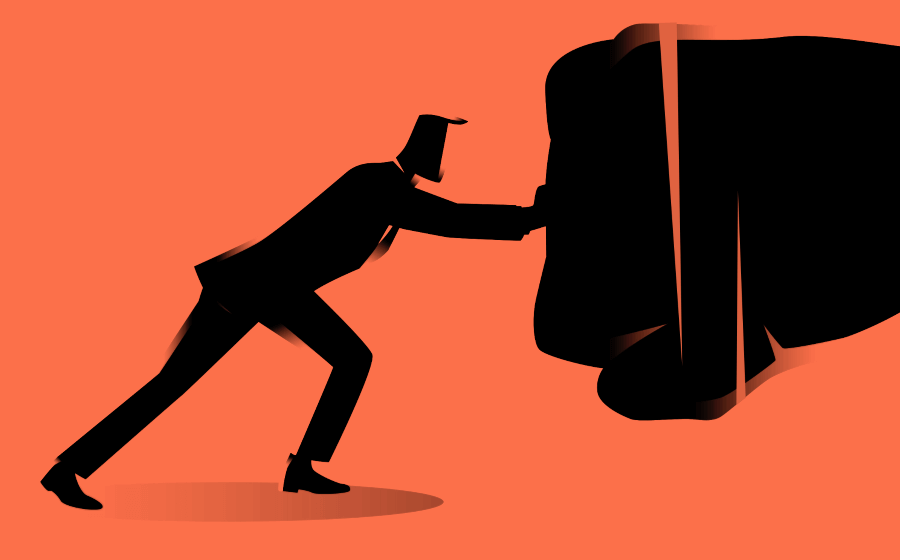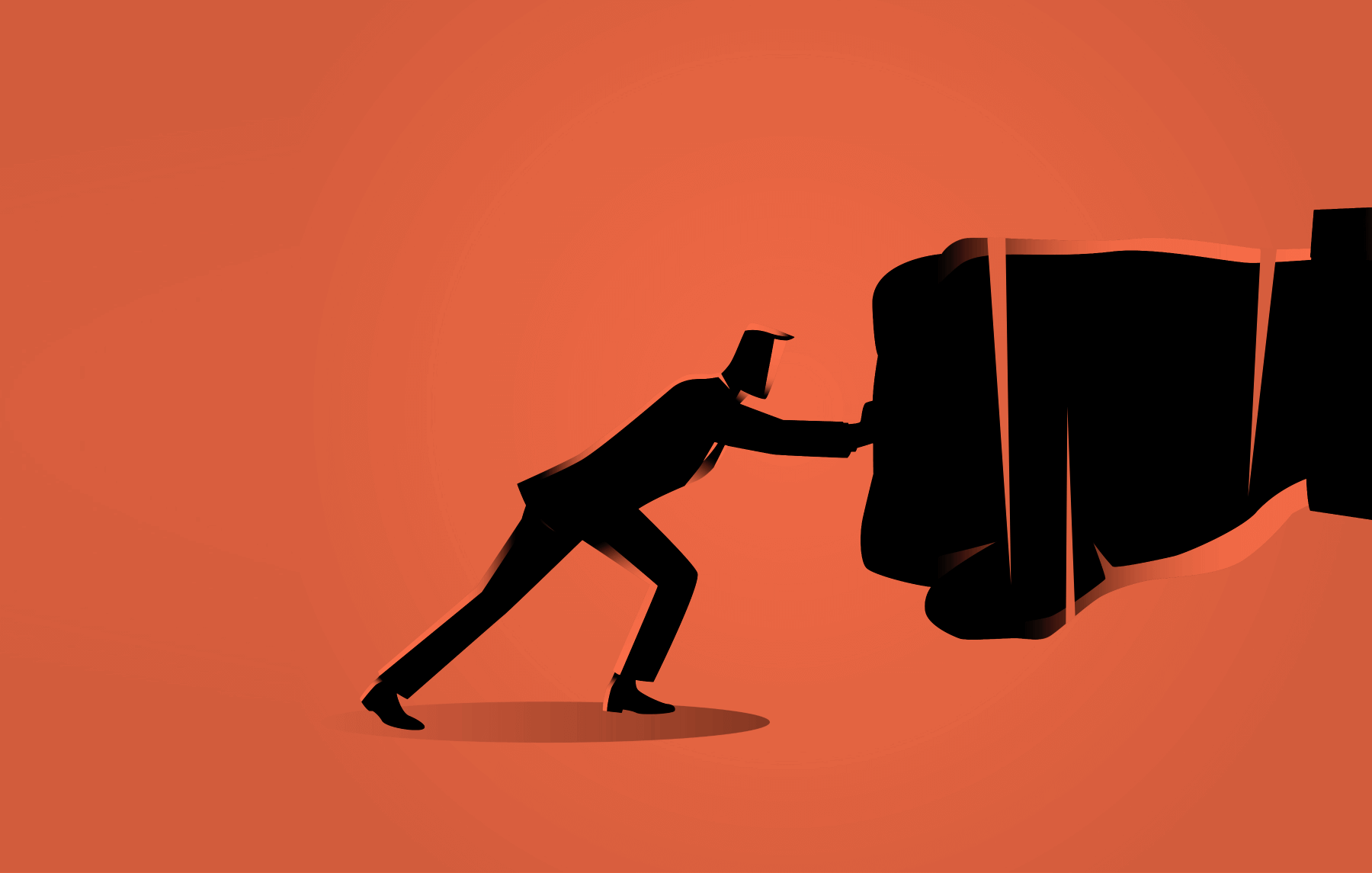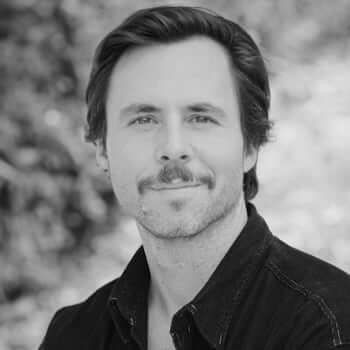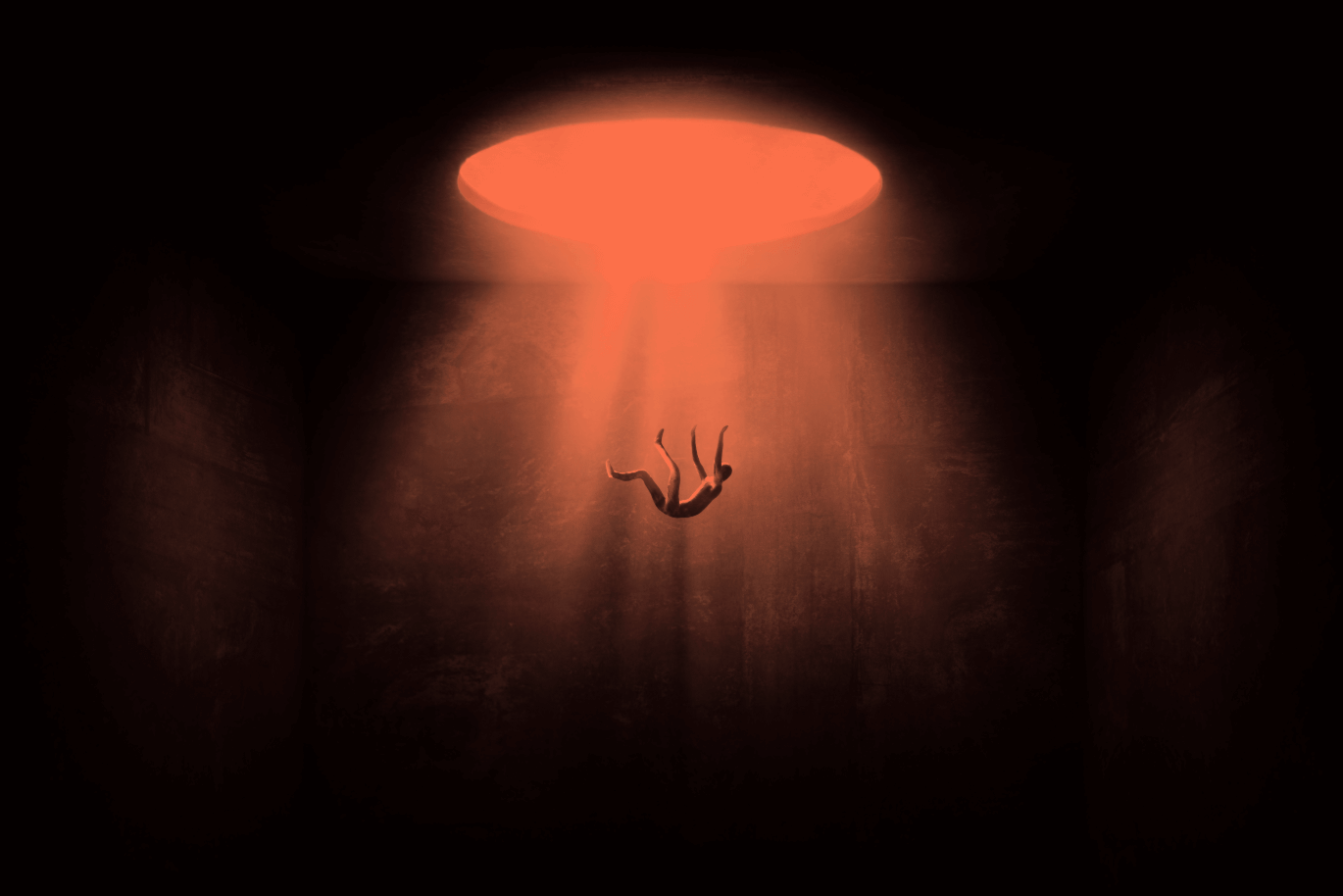“
The myth that our greatest men are fearless is both harmful and ridiculous, because everyone feels fear.”
Your success is tied to your willingness to trade worry for action


Your success is tied to your willingness to trade worry for action

As a lover of literature, it's easy for me to get all evangelical about books, but Michael Singer's 2015 memoir The Surrender Experiment rocked my world. In it, a listless yogi begins saying “yes” to whatever life puts in his path, and the results are astounding.
I remember reading the book just after moving from the East Coast to California. I was lonely, newly sober and filled with self doubt. Most of the time, I hid out in my apartment, stuck in an acute loop of analysis paralysis: I believed if I could figure out the perfect plan to move forward with my life, the anxiety I was experiencing would subside. Then, filled with confidence, I'd go out and start taking action.
The Surrender Experiment blew holes in my plan, though. Many times in the book, a young Singer experiences the same sort of doubt I was feeling, but instead of trying to think his way out of his predicament—like so many of us do— his profound answer was to act: to pull one Indiana Jones-esque leap of faith after the other until he began to understand that his doubt was both inevitable and erroneous. Thanks to Singer's story, I saw I had everything backwards: I couldn't wait for my fears to subside, I had to act in spite of them.
We live in a culture aimed at avoiding fear and discomfort. Comfort is the American way, right? As a collective, we tend to be overly cautious, over-medicated and overstimulated to the point of numbness. We take too few genuine risks, and own too many pairs of sweatpants. Yet, at the same time, most of us can agree that if we are comfortable, we aren't really growing. Growth, by nature, is uncomfortable. And discomfort brings fear. John Lennon famously barfed before nearly every Beatles show. Lawrence Olivier, the Shakespearian master, suffered from crippling performance anxiety. Alex Honnold, of Free Solo fame, backed off on several of his initial approaches to the El Capitan summit. The myth that our greatest men are fearless is both harmful and ridiculous, because everyone feels fear. Some of us just refuse to let it stop us.
“
The myth that our greatest men are fearless is both harmful and ridiculous, because everyone feels fear.”
One of my clients told me in our first session last summer that he wanted to move from the small Arkansas town he'd lived in his entire life to Denver, Colorado. Pretty big leap, right? He said he'd been thinking about it every day for six years, and never acted on it, because of fear and the recurring “what if” stories that had him locked in a vise-grip of self doubt.
Through our work together, though, this client began to have experiences of feeling the fear and acting anyway. He told me: “I realized that if I take really small steps towards the stuff that feels scary, I begin to build momentum, and that momentum eventually takes over.” Last month, the same dude who had been ruminating on a decision for over half a decade booked a monthlong stay in Denver to search for apartments. It felt crazy—especially in our current situation—but he did it anyway. A week later he had a job offer. He's moving the first week in March.
While the idea of acting on our most deeply held dreams will always seem scary, there's a helpful point to make here: Fear and action can't co-exist. This is a line my clients are probably tired of hearing me say. Tim Ferriss put it this way: “A person's success in life can usually be measured by the number of uncomfortable conversations he or she is willing to have,” and nearly all of us have had the experience of dreading such a conversation: we want a raise at work, or talk to our partner about something happening in the relationship, maybe we just want to post an unpopular opinion on social media. We worry and worry and worry about the impending action, but the moment we open our mouth or press 'Send' on the email, the fear is neutralized: We're present, in the moment, in the flow, and there's no fear. Tom Brady can't throw a downfield strike and fear being sacked at the same time. Our brains can only focus on one thing at a time.
It's also worth noting that there is zero correlation between fear and results. Those of us with unresolved trauma know that usually the fear or anxiety response we're having has very little to do with our current reality. Some of the most crippling fear I've ever experienced came minutes and hours before I did something that totally freed me from an old idea of how I had to show up in the world. I still remember the surge of anxiety in my chest before I approached an ex-girlfriend at her restaurant to ask her out for the first time, or the terror I felt back in January before talking to my clients about raising my coaching fees. Both times, I thought I'd be rejected or annihilated, and both times, the exact opposite thing happened—I got what I wanted. What if we came to see fear as an indicator that we're about to do something really good for ourselves? How radical a shift would that be?


Where are three places in your life you could take a leap of faith? Where you could feel fear and act anyway in order to get a little closer to your dreams?
An action we take doesn't need to be huge to be impactful. It could be as simple as spending five minutes on something that's really important to you, but always ends up at the bottom of your To Do List: maybe you've been wanting to take up gardening, learn jiujitsu, or swim in the ocean more. Maybe you want to buy a journal, email your favorite DJ, or bake some vegan cookies. An old coach of mine used to advise making a list of all the things we tend to avoid, and doing those things first thing in the morning, before the day sweeps in and takes over. Whatever we do, if it's important to us, it'll feel scary to really commit to. And that's when we know we're on the right track.
After several years of experiencing these leaps of faith, and seeing them happen for others, I've come to the conclusion that Marianne Williamson nailed it when she wrote: “Our deepest fear is not that we are inadequate. Our deepest fear is that we are powerful beyond measure.” By leaning into our fears instead of avoiding them, we harness that deep seated power within all of us. And I believe it can create real excitement and fulfillment in our lives in a way comfort never can.
You’ve now got a life coach at your disposal. Hit Sean up with any concern you’re currently struggling with: Trouble at work? Relationship worries, family struggles or general mental health concern? Let him help you tackle it each month in this column.
Advertisement